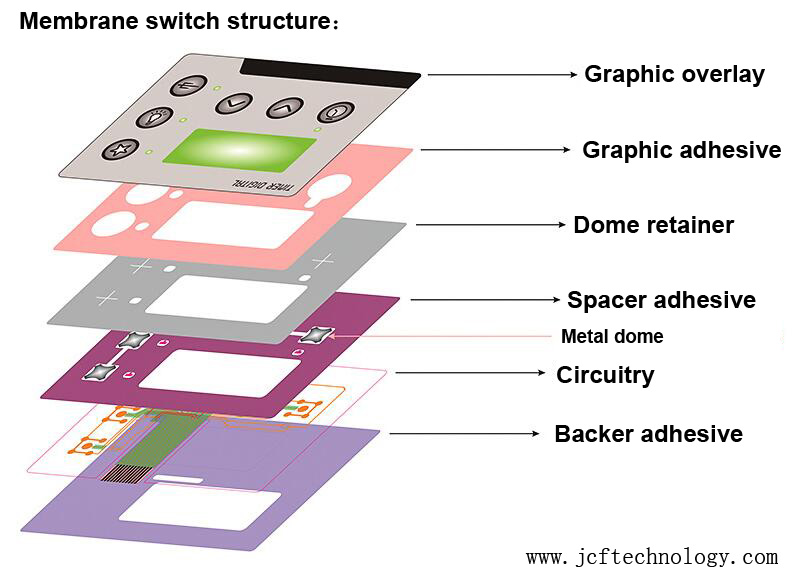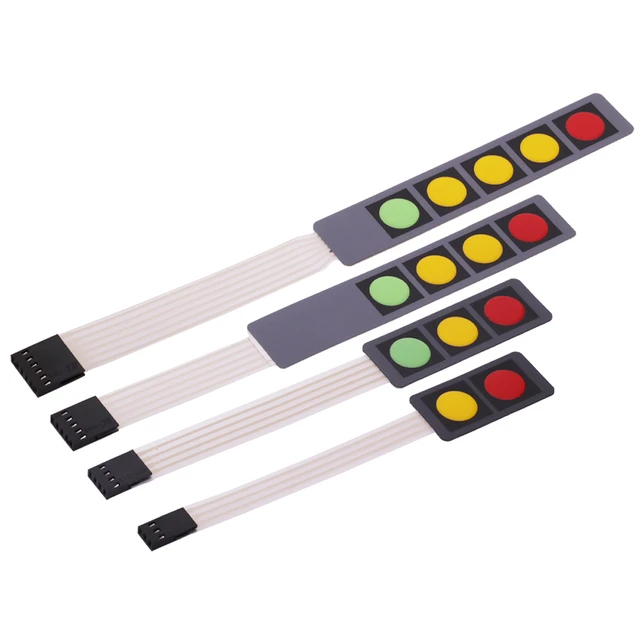The Role of Membrane Switches in Enhancing Device Functionality
The Role of Membrane Switches in Enhancing Device Functionality
Blog Article
Recognizing Membrane Layer Changes: The Secret to Resilient and Trusted Controls

What Are Membrane Switches?
Membrane layer buttons are a sophisticated service in the world of customer interface modern technology, incorporating functionality and design perfectly. These gadgets function as a user interface between customers and digital systems, incorporating a number of parts into a small style. Normally constructed from flexible, thin layers of materials, membrane layer buttons are made to respond to touch, enabling users to connect with equipment and electronic devices properly.
The main elements of a membrane layer button consist of a published circuit layer, graphic overlay, and a spacer layer that protects against unintentional activation. The visuals overlay can be tailored to mirror brand name identity or user preferences, boosting looks while guaranteeing usability. Membrane switches are typically used in different applications, including medical tools, customer electronics, and commercial tools, owing to their toughness and resistance to ecological variables such as wetness and dirt.
One of the key benefits of membrane buttons is their ability to withstand wear and tear, making them ideal for high-traffic atmospheres. Additionally, they are lightweight and require very little space, enabling ingenious layouts in item advancement. In general, membrane layer switches over stand for a functional and effective choice for modern digital interfaces, weding innovation with user-centric layout concepts.
Exactly How Membrane Switches Over Job
The operation of membrane layer switches over hinges on a simple yet efficient device that equates user input right into electronic signals. When an individual presses the button, the leading layer warps, enabling a conductive aspect in the circuit layer to make contact with a matching conductive pad on the underside of the visuals overlay.
The design of membrane layer switches can vary, however they typically integrate domes or tactile elements to give feedback to the individual, boosting the general experience - membrane switch. The materials used in membrane layer switches, such as polyester or polycarbonate, add to their sturdiness and resistance to environmental elements, consisting of dampness and dust. The published circuits are generally enveloped, which protects them from wear and tear over time.
Advantages of Membrane Layer Buttons

Additionally, membrane buttons are understood for their longevity. Created from durable materials, they are resistant to dirt, wetness, and physical wear, which dramatically expands their life expectancy contrasted to typical mechanical buttons. This durability makes them specifically appropriate for high-traffic atmospheres and applications needing durability.
One more substantial advantage is the simplicity of cleaning and maintenance. The smooth surface of membrane layer changes minimizes dirt build-up and is usually unsusceptible spills, making them optimal for setups that require constant sanitization.
Furthermore, membrane switches supply a structured account, resulting in a thinner design that can be incorporated right into various gadgets without adding mass. This function not only enhances the visual allure yet also contributes to a more ergonomic product layout.
Applications of Membrane Layer Buttons
Easy to use and versatile, membrane layer buttons locate applications throughout a variety of sectors, consisting of clinical gadgets, customer electronics, and commercial equipment. In the medical area, these switches are important to tools such as diagnostic tools, client monitoring systems, and infusion pumps, where dependability and simplicity of cleansing are important. Their capability to endure severe settings and preserve functionality read this makes them ideal for such applications.

In customer electronics, membrane switches are utilized in products like microwaves, cleaning equipments, and remotes - membrane switch. Their streamlined design allows for user-friendly individual interfaces, improving the general customer experience while supplying longevity and resistance to tear and wear
Industrial equipment also takes advantage of membrane layer switches, particularly in control panels for equipment and automation systems. These buttons use defense versus dirt and dampness, making sure constant performance in tough environments. Furthermore, their customizable features enable suppliers to customize them to details operational needs, improving effectiveness and performance.
Choosing the Right Membrane Change
When picking a membrane button, it is important to consider numerous elements that influence performance and viability for specific applications. The key considerations consist of ecological conditions, tactile responses, longevity, and design specifications.
First, assess the operating environment; switches revealed to wetness, chemicals, or extreme temperatures call for particular products to ensure long life and performance. Next, review the requirement for responsive feedback. Relying on customer communication, some applications might take advantage of a responsive action to confirm activation, while others may favor a non-tactile layout for aesthetic reasons.
Sturdiness is one more essential aspect; membrane layer switches ought to be made to stand up to constant usage, effects, and abrasion. Guarantee the chosen button can endure the anticipated lifecycle, particularly in high-usage circumstances.

Final Thought
In final thought, membrane switches offer as essential components in the layout of dependable and durable control systems across various markets. The flexibility of membrane changes permits for tailored solutions that meet certain operational requirements, strengthening their value in contemporary technology.
Membrane layer switches represent a critical aspect of contemporary user interface style, mixing internet performance with strength in numerous applications.Membrane layer buttons are a sophisticated solution in the realm of customer interface modern technology, incorporating capability and style seamlessly. Typically created from flexible, slim layers of products, membrane buttons are made to react pop over to these guys to touch, enabling customers to communicate with equipment and digital devices successfully.
The style of membrane switches can differ, but they frequently include domes or tactile components to give responses to the user, improving the overall experience.In verdict, membrane layer changes offer as essential elements in the design of dependable and long lasting control systems across various markets.
Report this page